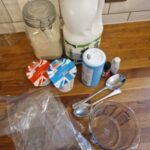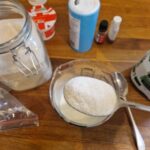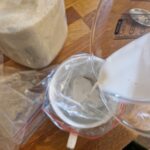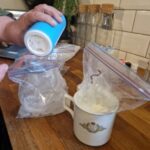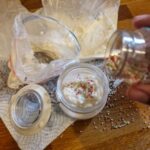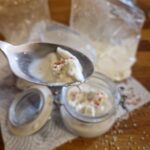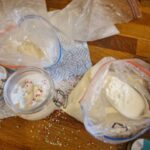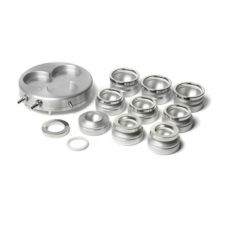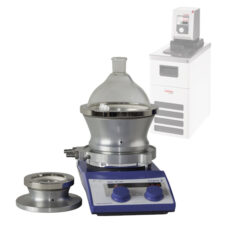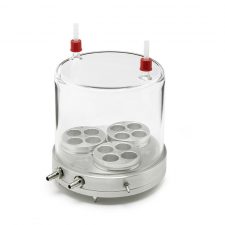
It’s pretty hot here in the UK right now where the Asynt headquarters are. The school summer holidays aren’t far off so it’s a great time to plan some fun STEM activities that will keep both the children and adults entertained and cool! How about making ice cream in a bag?
Ok, it sounds a bit odd, I grant you. I found a post on the web describing the basic principles of a simple experiment to make ice cream in a bag, and decided to give it a go. My friend came to help me as I didn’t have enough hands! It was actually quite easy, definitely fun, but it would require some adult supervision and a good pair of gloves :)
To make it a real experiment you need to change a variable; perhaps try without the salt, use different salt, use different milks like semi skimmed (half fat) or oat milk perhaps, or different types of cream? If you set up two or more bags you can gauge the impact of those differences.
The basis of the term “scientific method” is a process or a method of researching something. You would identify a problem (it’s hot and I want some ice cream, but how do I get that quickly as I am in a hurry?), gather information about the problem (ice cream is typically made with cream, sugar, and involves a lengthy freezing process) and formulate a hypothesis or question (if I use those ingredients but use a substance to make the ice more effective, will I get ice cream quickly?).
We used one set of ingredients as per the list below, but in the 2nd we substituted single cream with double (heavy) cream. Would the 2nd batch of ice cream in a bag set more quickly with the thicker cream, or would it be slower as there’s more fat and less water?
Tools & ingredients
- 1/2 cup half and half (cream and milk)
I used 100 mL of semi-skimmed milk with 100 mL of single cream for experiment 1
I used 100 mL of semi-skimmed milk with 100 mL of double cream for experiment 2 - ¼ tsp vanilla
I ran out of vanilla so used raspberry flavour in experiment 1 and butterscotch flavour in experiment 2 - 1 TBSP sugar
I used 1 table spoon of natural brown caster sugar in each mix - 3 cups ice
- ⅓ cup kosher or rock salt
I couldn’t find rock salt or kosher salt, so I used 3 tablespoons of fine sea salt - Gallon size zip top bag(s)
- Quart size zip top bag(s)
I only had one size bag which made it trickier but not impossible! - Sprinkles, chocolate sauce, fruit (these are all optional but are really the most fun part!)
Method
Step 1: Mix the ice and the salt together in a bag and set aside.
Step 2: mix the milk and cream together, add the sugar and flavouring, and pour into a bag and seal.
Step 3: pop the bag with the milk mix inside the bag with the ice, and squish it all around together. You’ll need your gloves as the bag gets VERY cold!
If you find your ice cream in a bag not working, try adding more ice and salt to the bigger bag and continue to shake/squish for a further 5 minutes.
Results of our ice cream in a bag experiment
As you can see from the final two photos above, my first batch (experiment 1) with the single cream froze a lot faster than the other (experiment 2) with the double cream which wasn’t what I expected. As fat has a higher freezing temperature than water, and there being more fat in the cream than in the milk, and certainly more in the double cream than the single, I wonder if this was a difference in operator technique (ie me doing the “squishing” or my friend doing it!) Maybe we need to do another batch and see…! There was also a certain amount of spillage as my two bags were the same size, leaving less capacity for moving the ice around the milk mixture. That worked out quite well for our dog, Vince who was quick to help with clean up duty!
So how does the salt effect the ice and help this reaction? The salt lowers the freezing point of the ice, so the ice cubes melt at a lower temperature than the freezing point of pure water. Salt is an ionic compound of positive sodium (Na) and negative chlorine (CI) ions, and water molecules are polar, each having a week positive charge on one side and a negative on the other.
When salt and water come in to contact, each side of the water molecule attracts one of the salt ions, the salt molecule breaks apart, and the water molecules surround the ions. This process of dissolving fills the water with a solute, and because it’s there, the water molecules have more freedom of movement. The water stays in a liquid state at a lower temperature. So, adding salt to the ice that surrounds the ice cream base provides a temperature cold enough so that the ice cream inside can thicken and freeze before the ice outside the base melts entirely!
I hope if you give this a try you’ll share some photos on Twitter or Instagram and tag us! If you’re more interested in controlling the temperature of your more advanced reactions in the lab then we have some useful tools for you – whether you’re looking at standard, oil-free heating and cooling, or controlling the temperature of your photochemical reaction or Flow Chemistry, or setting the precise temperature for your jacketed lab reactor – just ask?
You can reach us via [email protected], call us on +44 (0)1638 781709, or talk to us via the LIVE CHAT box at the bottom right of your screen.
Sources: https://littlebinsforlittlehands.com/simple-homemade-ice-cream-in-a-bag-edible-science/ https://www.diamondcrystalsalt.com/blog/why-is-salt-used-in-ice-cream
